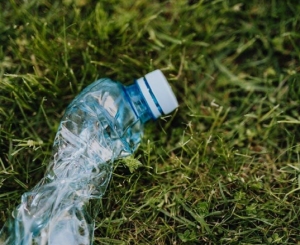 Back in 1950, the global population of 2.5 billion produced 1.5 million tons of plastic. Sixty-six years later in 2016, 7 billion people produced over 320 million tons of it. That figure is estimated to double by 2034.
Back in 1950, the global population of 2.5 billion produced 1.5 million tons of plastic. Sixty-six years later in 2016, 7 billion people produced over 320 million tons of it. That figure is estimated to double by 2034.
We’ve all heard that plastic is bad for the environment, but have you ever wondered exactly how does plastic harm the environment? Let’s take a closer look at how plastics are damaging the world around us.
How Does Plastic Harm the Environment?
First of all, plastic is everywhere. You can find plastic debris along trails in national parks, it clogs our cities’ drains and clutters our beaches. Experts even predict that there will be more plastic in the ocean than fish by 2025!
Sadly, it doesn’t end there. Over 90% of the world’s sea birds are carrying plastic in their stomachs. Not to mention a large number of sperm whales were found stranded with up to 25kg of debris in each animal.
Further Harm to Animals
The biggest problem is that it’s a lot more complicated than saying, “If an animal eats plastic, it can be harmful.” Microscopic plastic debris is ingested right down at the bottom of the food chain by zooplankton. Zooplankton is a crucial part of the foundation of the marine food web.
It’s not just a case of the odd fish accidentally swallowing a plastic bottle top. It’s the fact that the ocean now contains microscopic plastic debris much like it contains bubbles of oxygen.
Not All Recyclable Plastic Is Recycled
Discarded plastic can take up to 600 years to decompose, so discarding it really shouldn’t be an option. Sadly, biodegradable plastic makes up for a little over 1% of the plastic produced globally. This means that to reduce the detrimental effects that plastic has on the environment, we must recycle it. But how much plastic is recycled?
Recycling bins are everywhere now. We even sort out all our household waste so that plastics are discarded separately, so surely most plastic is recycled. Wrong! About 9% of plastic is recycled. We now produce more than 350 million tonnes of new plastic each year.
What Can You Do to Help
If we don’t have any control over how much plastic is recycled then what can we do? Well, the main thing is to significantly reduce the amount of plastic we use.
Instead of using plastic bags for your groceries and shopping, use non-plastic reusable alternatives such as these reusable food bags. When you go shopping avoid buying groceries that are pre-packed in plastic.
You should stop using plastic straws and disposable plastic toothbrushes. Non-plastic alternatives are now widely available. Stop using plastic bottles and buy a reusable travel mug instead. Toiletries are now becoming more available in non-plastic packaging so be sure to choose them instead.
Saving the World One Piece of Plastic at a Time
Reducing the amount of plastic waste is not an overnight task. Over time, hopefully, people can move away from using plastics. Knowing how does plastic harm the environment is the first step to rectifying the problem. The plastic crisis is one that is only going to be solved by consciousness and vigilance.
Be sure to take a look at our other articles for more on the environment and smarter lifestyle choices.
Shift Frequency © 2020 – How Does Plastic
Harm the Environment?
